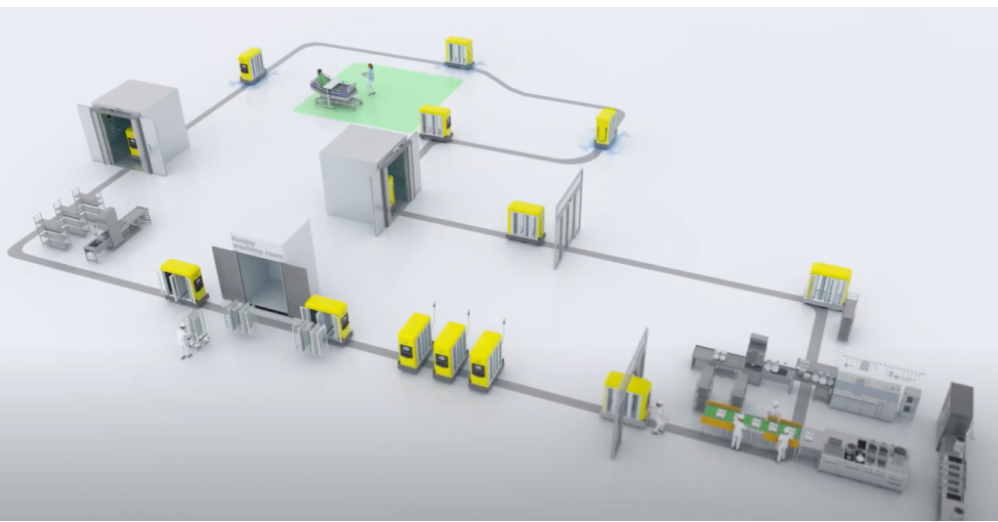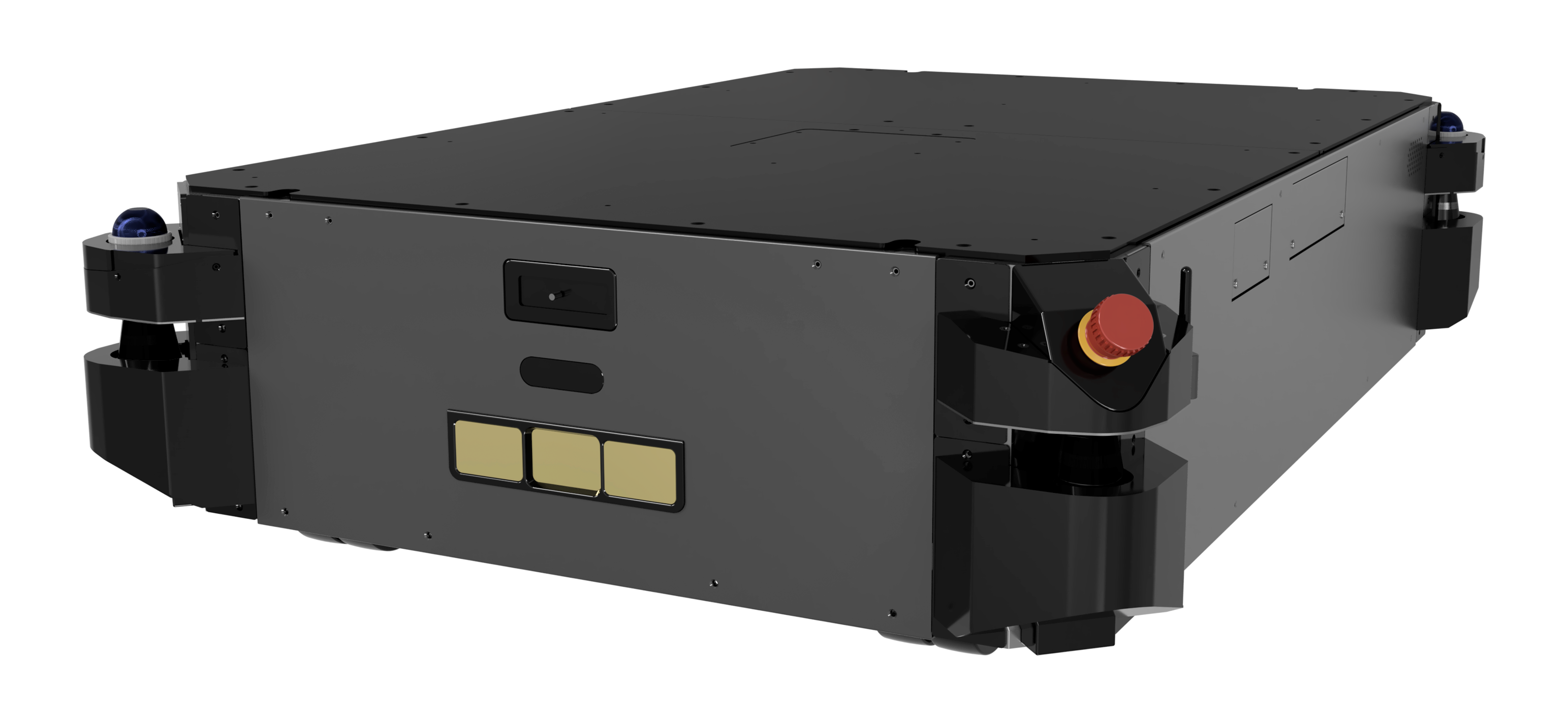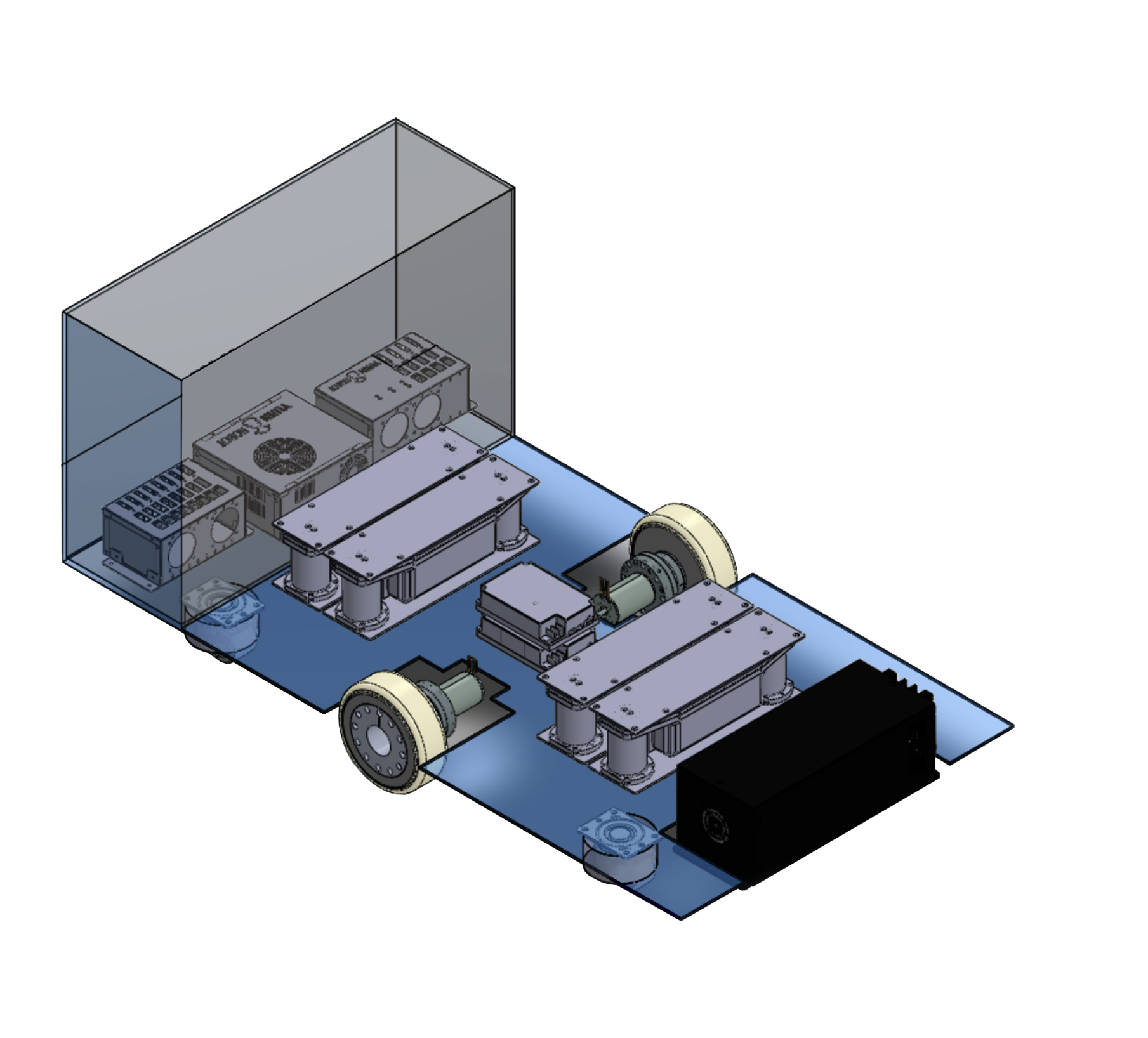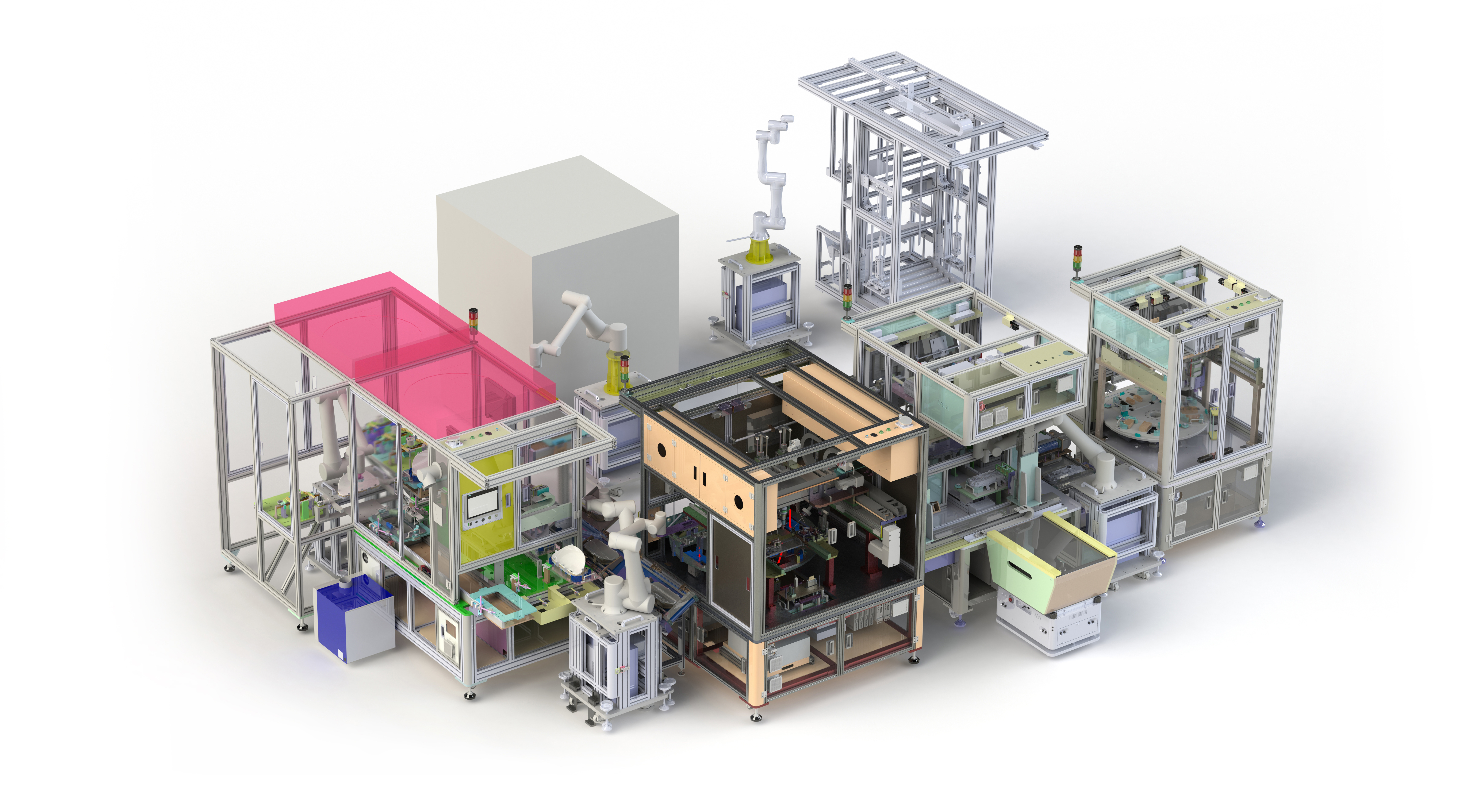Fortunately, mobile robotic technology is stepping up to solve some of the most pressing challenges faced by healthcare facilities.
While we haven’t reached an age where robotic workers are changing bedpans and taking temperatures, robotic automation in healthcare is already relieving human workers of many repetitive tasks. When combined with a fleet management system for mobile robots, AMRs boost worker productivity and safety, and improve patient care.
Common Applications of Mobile Robots in Healthcare

1. Delivery.
Mobile robots such as Yujin Robot’s GoCart series excel at automating repetitive tasks, such as carrying items from one place to another. Hospitals use AMRs to carry medicine from the pharmacy, deliver fresh linens or meals to a patient’s room, or take samples to the laboratory. Robots can lift and carry heavy loads, such as bundles of laundry or hospital equipment, without risk of injury.
Modern hospitals are busy places full of hustle and bustle, and AMRs are built for that busy environment. Mobile robots in healthcare facilities are equipped with mapping and navigation software, allowing them to avoid obstacles in busy corridors and find the most efficient route to their destination. AMRs can interact directly with a hospital’s IT system, and communicate with automated doors and elevators.
Some robots deliver medicines directly to a patient’s room. Using robots to deliver medicine eliminates human temptation and reduces drug theft. These robots also reduce the likelihood of a patient mistakenly being given the wrong medicine, as they use biometric systems such as finger vein identification to ensure delivery to the right patient.
AMRs such as the GoCart series are powerful tools when used with a hospital’s Central Sterile Services Department (CSSD). CSSD staff pack sterile instruments carefully and dispatch them via GoCart. In addition to freeing human workers from this repetitive task, using AMRs to access this facility reduces the risk of contamination from airborne pathogens, because workers don’t shuttle between patient care areas and CSSD. Deliveries can be scheduled for top efficiency, and eliminate concerns about workers running late, mistakenly delivering to the wrong station, or forgetting key items.
The COVID-19 pandemic revealed another benefit of letting mobile robots carry out these vital but repetitive tasks: reduced risk of viral transmission among staff. With many delivery tasks automated, fewer workers need to move back and forth between COVID wards and other areas of a hospital. Robots carry and dispose of medical waste that would be hazardous to human workers.
2. Sanitation.
Ultraviolet Disinfection robots, or UVD, have introduced a new level of sanitation to healthcare. These mobile robots emit short-wavelength ultraviolet light, which effectively kills not just bacteria but viruses such as COVID-19. Application of these mobile robots to healthcare sanitation greatly reduces risk to patients and workers by removing airborne and resting bacteria and viruses from patient rooms, hallways, operating rooms, and bathrooms.
3. Telepresence.
Human workers provide value in addition to simple labor. They can make decisions, recognize discrepancies and solve
Most of us are familiar with remote video conferencing.Telepresence robots bring this option to onsite healthcare. These mobile robots are essentially computers on wheels, with the same navigational abilities as robots used for delivery, but carrying a video screen, camera and microphone.
Telepresence robots extend the number of patients a doctor in high demand, such as a specialist, can attend to in a day. When a patient is highly contagious, such as those in COVID wards, telepresence reduces the danger to staff while maintaining a high level of patient care.
These are the most common applications of mobile robots in healthcare, but certainly not the only ones.
Other Applications of Mobile Robots in Healthcare
In addition to delivery, sanitation, and telepresence, mobile robots are used for other healthcare applications.
Texas Medical Center, for example, uses mobile robots as automated lab technicians. These robotic helpers mix liquids to the proper dosage; retrieve and carry lab samples; load and unload centrifuges; and perform many other repetitive tasks normally done by humans. Delegating such work to mobile robots frees their human coworkers for more complicated assignments.



















